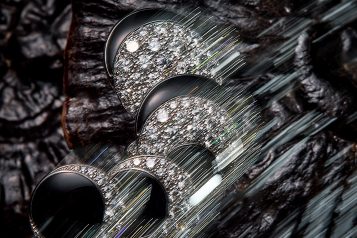With Summer just over the horizon, It’s time to have a serious talk about sun safety. Without proper protection, prolonged exposure to the sun can wreak havoc on your skin, but that doesn’t mean you need to completely give up on bikini time. In celebration of Skin Cancer Awareness Month, we’ve compiled five pervasive myths about sunscreen and set the record straight on what it really takes to stay safe while enjoying the sunshine.
Myth #1: Sunscreen still works if you only use a little
In order to get the full protection from your sunscreen, and achieve the SPF number on the label, you need to apply a nice thick layer. Unfortunately, most people apply too little sunscreen, leaving skin vulnerable, and achieving a sun-protection-factor that’s far lower than the one advertised on the bottle. Sunscreen should be applied at approximately 2 milligrams of lotion per square centimeter of skin, or about one ounce for your entire body. That’s roughly the amount in a shot glass of lotion. The big lesson here: BE GENEROUS. Your skin is worth it.
Myth #2: All sunscreens are the same
Many don’t realize, but sunscreen is divided into two broad categories: Physical and chemical. Physical sunscreens are typically thought to be superior by dermatologists in a number of ways. Unlike chemical sunscreens, which absorb the sun’s rays and can create free radicals, physical sunscreen protects skin by sitting on top of the surface and deflecting the radiation like a shield. Physical blocker sunscreens include ingredients such as zinc oxide and titanium dioxide and are a better choice for people with sensitive skin, as they are less irritating than chemical sunscreens with a similar SPF rating.
Myth #3: You only need to apply when you’re in the sun
This is a dangerous misconception that too many people fall for. Sunscreen isn’t an instant remedy for sun exposure. It needs to be applied early and re-applied often. Most sunscreens require at least 15 minutes to start working, so applying sunscreen on the beach, in the middle of the sun’s full assault is not an option. Keep the application of sunscreen early in your daily regimen, so by the time you’re heading out, your sun protection is already at work. You also need to reapply sunscreen more often than you think. The best sunscreens are only fully-effective for around 2 hours, and activities like sweating, swimming, and rubbing will blunt its protection even quicker. Finally, it’s important to mind the shelf-life. Sunscreen expires after two or three years, and open bottles expire even sooner, so it’s a good idea to replace old bottles often.
Myth #4: Sunscreen can mix withe everything
Sunscreen is super sensitive mix of chemicals and additives. Mixing your sunscreen with lotions, creams, or other topical products can interfere with the active ingredients and reduce the product’s protection. It’s a good idea to rub sunscreen into the skin well before applying any other types of skin care products. Also, makeups with only SPF 15 aren’t enough to protect skin. Aim for products with at least a rating of SPF 30.
Myth #5: Wearing sunscreen means I can spend all day in the sun
The most important tip is remembering that sunscreen is only one part of the equation. Applying sunscreen isn’t carte blanche to run around in the sun all day. You should attempt to find shade whenever possible, and avoid the sun at peak hours. Also, try to wear photoprotective clothing. Finally, no amount of tanning is good for the skin. A change in skin color is always indicative of damage being done to the skin. If you’re still tanning, even with correct sunscreen use, you still aren’t being safe enough.





















